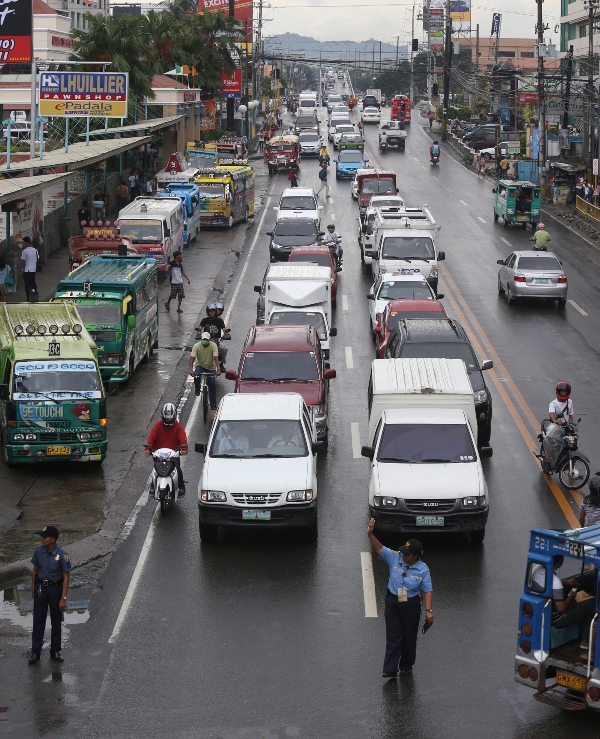
This file photo shows a female traffic enforcer (right) doing her job right by Country mall at Governor Cuenco Ave. where she was hit and killed by a vehicle driven by a Korean national. (CDN PHOTO/JUNJIE MENDOZA)
Teach traffic aides self-defense and give them more allowances.
“I really feel they are underpaid,” said Ruben Almendras, board chairman of the Cebu City Traffic Operations Management (Citom).
“We have to pay these people better but first we have to show where the money will come from.”
“There is no need for us to increase parking fees or traffic fines. All we have to do is to intensify its implementation,” Almendras told Cebu Daily News.
His statement followed the death of 38-year-old traffic aide Maria Teresa Bascones, who was accidentally hit by a Hyundai Tucson van while manning peak hour traffic outside the Gaisano Country Mall on the Banilad-Talamban road last July 15 (not July 8 as earlier reported).
The death called attention to risks on the job of Citom traffic enforcers who are exposed to moving vehicles, air pollution and irate, sometimes violent drivers who resent getting a citation ticket.
The case of Bascones caused a wave of low morale among co-workers after the van driver, a Korean housewife, was released on bail of P30,000, after being charged with reckless imprudence resulting in homicide.
Citom traffic aides who are killed in the line of duty only receive P10,000 burial assistance and not much else.
A traffic aide receives P10,401 to P11,000 a month, with an annual P5,000 clothing allowance and a one-month bonus.
Almendras, a finance and investment expert, said training and better compensation are two priorities he wants to accomplish during his term as Citom board chairman to improve working conditions of personnel, especially those on field.
“We can call the additional allowances incentive pay or hazard pay. What is more important is Citom personnel should be paid more,” he said.
But first, the traffic department has to increase its revenues by 15 to 20 percent this year to afford the pay increase and more training.
He said one proposal, under review by the City Treasurer’s Office, seeks to tap the city’s 80 barangays for the collection of pay parking fees.
Under the proposal, barangays would get a share of 20 percent of the fees collected.
Citom collects at least P80 million a year from parking fees and fines from traffic violations.
City Hall’s traffic department also gets about P110 million as subsidy from the city government for its operations.
Acting Cebu City Mayor Edgar Labella said he would press for accident insurance coverage for traffic aides, a matter he will bring up with Mayor Michael Rama when the mayor returns from his US trip.
“Considering the nature of their jobs, (traffic aides) should not just get death benefits but also get coverage for injuries,” he said.
Labella agreed that the pay of Citom traffic aides is not commensurate to the job they perform and should be increased.
Hazard pay is given to employees whose work is hazardous or dangerous in nature or who report for work in stations or areas where conditions are dangerous such as war or active hostilities.
Among Philippine government employees, this is received by military and police officers, public health workers, public social workers, and some science and technology research personnel (for potential exposure to deadly conditions such as calamities and radiation.)
The amount for public health workers ranges from 5 percent of basic monthly pay for low exposure to risk to 25 percent for high risk jobs.
The payment is stated in magna cartas enacted into law by Congress.
Under study are bills proposing hazard pay for teachers assigned in risky regions like Maguindanao or the mountain provinces, and corrections and parole officers.
Related Stories: